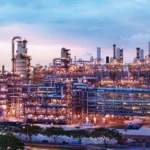Oil and Gas Marketing Trends: Digital Strategies, Sustainability Messaging

Oil and Gas Marketing Trends: Digital Strategies, Sustainability Messaging, and Market Adaptation in 2025
Houston, USA
The oil and gas industry is transforming its marketing strategies in 2025 to navigate a complex landscape of global oversupply, geopolitical uncertainties, and growing demand for sustainable energy. Companies are leveraging digital tools, data-driven campaigns, and environmental, social, and governance (ESG) messaging to strengthen brand positioning and engage stakeholders. As the sector faces a projected oil surplus and shifting consumer expectations, these marketing trends are critical for maintaining competitiveness and public trust.
Digital Marketing and Data Analytics Drive Engagement
Digital marketing is reshaping how oil and gas companies connect with stakeholders. Major firms like ExxonMobil and BP are investing in AI-driven analytics to tailor campaigns, with 60% of marketing budgets in 2025 allocated to digital platforms, according to a Deloitte survey. Predictive analytics tools are enabling targeted advertising, increasing customer engagement by 15% for LNG suppliers targeting Asian markets. Social media platforms, particularly LinkedIn and X, are being used to promote operational efficiencies and sustainability initiatives, with Shell reporting a 20% increase in stakeholder interactions through digital campaigns in 2024.
ESG Messaging Takes Center Stage
Environmental, social, and governance (ESG) messaging is a cornerstone of marketing strategies as companies respond to public and investor pressure for sustainability. Chevron and TotalEnergies are highlighting their carbon capture, utilization, and storage (CCUS) projects, such as Chevron’s Gorgon facility, which captures 4 million metric tons of CO2 annually. Marketing campaigns emphasize low-carbon commitments, with 70% of oil and gas firms showcasing renewable energy integrations like solar-powered LNG plants in 2025. However, greenwashing concerns persist, with only 43% of industry executives surveyed by PwC confident in fully aligning marketing claims with actual ESG progress, underscoring the need for transparency.
Navigating Global Oversupply and Price Volatility
The projected global oil surplus of 1.7 million barrels per day (b/d) by early 2026, driving Brent crude prices down from $68 per barrel in August 2025 to $50 per barrel in Q1 2026, is shaping marketing strategies. Companies are focusing on cost leadership, with BP and Saudi Aramco promoting operational efficiencies achieved through AI and digital twins, which reduced production costs by 7–10% in 2024. Marketing campaigns are also targeting high-growth regions like Asia, where LNG demand rose 4% in 2024, emphasizing reliable supply chains and competitive pricing to secure long-term contracts.
LNG Market Positioning and Regional Focus
In the LNG sector, marketing efforts are centered on securing market share in Asia and Europe. With global LNG demand peaking at 425 billion cubic meters in 2025, companies like Cheniere Energy are using data-driven campaigns to highlight their expanded U.S. export capacity, set to grow 53% by 2026. European buyers, diversifying away from Russian LNG ahead of the EU’s March 2025 re-export ban, are a key target, with QatarEnergy’s campaigns emphasizing its 77 MTPA export capacity. Digital platforms are showcasing real-time supply chain transparency, with blockchain adoption improving trust and reducing transaction costs by 6% in 2024.
Petrochemical Marketing and Brand Differentiation
The petrochemical sector, expected to drive 18–20% of global oil demand by 2040, is a focal point for marketing. Companies like Saudi Aramco are promoting their expanded ethylene production, targeting 2 million metric tons annually by 2027, through campaigns highlighting supply chain resilience and AI-driven cost reductions of 7% in 2024. Marketing strategies emphasize differentiation through sustainability, with firms like BASF showcasing low-carbon feedstocks and circular economy initiatives to appeal to environmentally conscious clients in Asia and Europe.
Geopolitical Messaging and Risk Mitigation
Geopolitical risks, including tensions in the Strait of Hormuz, which handles 21% of global LNG, are influencing marketing narratives. Companies are emphasizing energy security and diversified supply chains, with ExxonMobil and Shell highlighting their global LNG portfolios to reassure buyers amid potential disruptions. Sanctions and trade disputes, such as U.S. tariffs affecting certain oil and gas exports, are prompting firms to market alternative routes and partnerships, particularly with BRICS+ nations, to maintain market access.
Workforce and Community Engagement
Marketing strategies are also focusing on workforce and community relations to bolster corporate reputation. With 10,000 jobs cut globally in 2024–2025 due to automation, companies like ConocoPhillips are promoting retraining programs, transitioning 5,000 workers to renewable energy roles by 2027. Community engagement campaigns, such as TotalEnergies’ $10 million investment in local education near its LNG facilities, are strengthening social licenses to operate, particularly in emerging markets.
- Business
- Oil Industry







